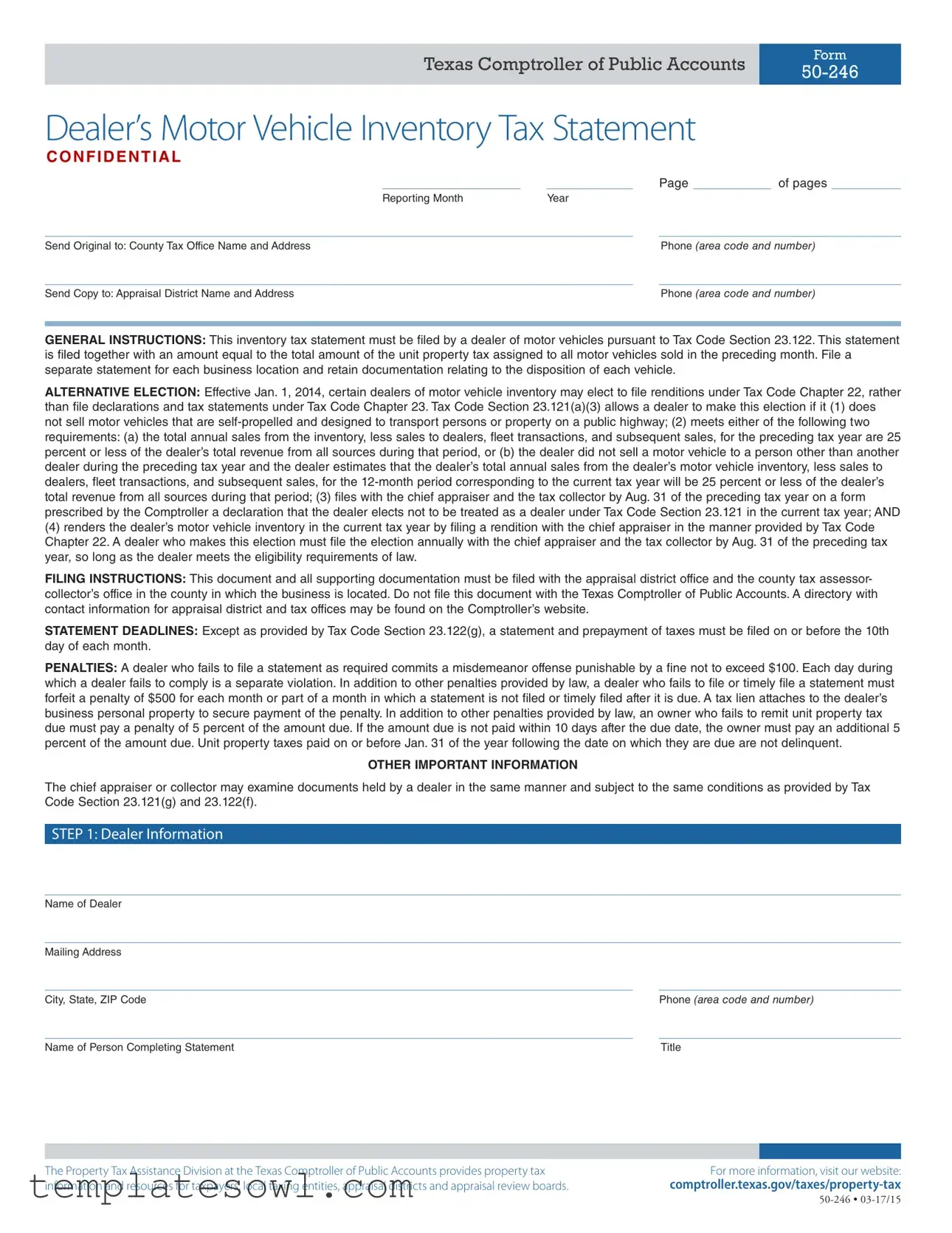What is the purpose of the Inventory Tax Form 50-246?
The Inventory Tax Form 50-246 is used by motor vehicle dealers in Texas to report and pay property taxes on their inventory of motor vehicles. This form must be filed monthly, detailing the motor vehicles sold during the previous month, to comply with Texas tax laws.
Who is required to file Form 50-246?
Any dealer selling motor vehicles in Texas must file Form 50-246. This includes those who maintain an inventory of vehicles that are sold either to consumers, other dealers, or as fleet transactions. A separate form must be filed for each business location operated by the dealer.
What are the deadlines for filing this form?
Dealers must file their Inventory Tax Form 50-246 and the corresponding payment by the 10th day of each month. This ensures that the report and payment for the previous month’s vehicle sales are submitted in a timely manner.
What happens if a dealer fails to file the form on time?
Failure to file the form on time can result in various penalties. A dealer might face a misdemeanor offense and a fine up to $100. Additionally, the dealer incurs a $500 penalty for each month that the statement is late, alongside a potential tax lien on their business property.
Can a dealer choose not to file Form 50-246?
Yes, under certain conditions, a dealer may elect to file under Tax Code Chapter 22 instead of using Form 50-246. This option is available for dealers who meet specific criteria related to their sales volume and inventory type. They must file a declaration by August 31 of the preceding tax year to make this election.
What information is required when completing Form 50-246?
Dealers must provide detailed information about each motor vehicle sold during the reporting month. This includes the date of sale, model year, make of the vehicle, identification number, purchaser’s name, sales price, and associated unit property tax. Supporting documentation must accompany the form if needed.
Where should the completed form and payments be submitted?
The completed Form 50-246 and all supporting documents must be filed with the appraisal district office and the county tax assessor-collector’s office for the county where the business operates. It is crucial not to send these documents to the Texas Comptroller of Public Accounts.
What is the potential penalty for inaccurate reporting on Form 50-246?
If a dealer submits false information on the form, they could face serious legal consequences. This could include being charged with a Class A misdemeanor or even a state jail felony, highlighting the importance of accurate reporting.



